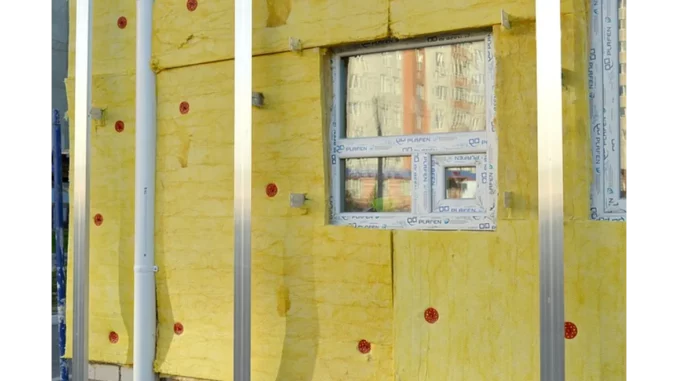
In the ever-evolving world of building energy efficiency, the concept of PSI values often takes centre stage. To gain more insights into this technical yet crucial aspect of building design, I recently sat down with Richard Bennett, a seasoned energy consultant with over 15 years of experience in the field. Richard’s expertise spans from SAP calculations to advanced thermal imaging, making him the perfect guide to navigate the intricacies of improving thermal performance beyond addressing thermal bridges. Here’s a recount of our enlightening conversation.
Successful low-energy building design hinges on careful planning. Focus360 Energy can help.
Emily Thompson: Richard, thank you for joining me today. Could you start by explaining what PSI values are and why they’re so important for building thermal performance?
Richard Bennett: Absolutely, Emily. PSI values, represented by the Greek letter Ψ (psi), measure linear thermal transmittance. They essentially quantify how much heat escapes through linear junctions in a building, like the connection between a wall and a floor or the edges around windows. These are critical weak points, often referred to as thermal bridges. High PSI values indicate higher heat loss, which can lead to increased energy consumption and discomfort within the building.
Emily Thompson: That’s fascinating. How are these PSI values calculated?
Richard Bennett: The calculation of PSI values is quite complex. It involves three main factors: the thermal properties of the materials, the geometry of the junction, and the environmental conditions. Each material used in the junction has a unique thermal conductivity, determining how easily heat passes through it. The geometry, or the shape and configuration of the junction, also plays a significant role. A simple junction will have a different PSI value compared to a more intricate one. Lastly, environmental conditions such as the temperature difference between the inside and outside, wind speed, and humidity can affect heat flow.
To get an accurate PSI value, we use specialised software to simulate these conditions. The software considers all the factors I mentioned and helps us identify areas with high heat loss. The formula used is Ψ = Q / (ΔT x L), where Q is the heat flow rate, ΔT is the temperature difference, and L is the length of the junction.
Emily Thompson: That’s quite detailed. Once you’ve identified high PSI values, what steps can be taken to improve a building’s thermal performance?
Richard Bennett: Addressing high PSI values is just the beginning. Beyond thermal bridges, improving a building’s thermal performance involves a holistic approach. Here are some strategies:
-
Enhanced Insulation: While thick insulation is essential, it’s crucial to ensure that it’s continuous and covers all tricky junctions. Insulation should be applied meticulously around corners, edges, and junctions to minimise thermal bridges.
-
High-performance Windows and Doors: Opt for windows and doors with low U-values, which indicate better insulating properties. Proper installation is key to avoid gaps that could become thermal bridges.
-
Airtight Construction: Ensure that the building envelope is airtight to prevent heat loss through air leakage. This involves sealing gaps and cracks around windows, doors, and other penetrations in the building envelope.
-
Thermal Breaks: Introducing thermal breaks in structural elements like balconies and cantilevered beams can significantly reduce heat loss. These are materials with low thermal conductivity inserted between structural elements to interrupt the heat flow.
-
Advanced Building Materials: Using materials with better thermal properties, such as aerogels or vacuum-insulated panels, can enhance thermal performance without increasing thickness.
-
Ventilation with Heat Recovery: Installing a mechanical ventilation system with heat recovery (MVHR) can ensure fresh air while recovering heat from exhaust air, reducing energy loss.
Emily Thompson: These are excellent strategies. Can you explain the role of SAP calculations in this process?
Richard Bennett: Certainly. SAP, or Standard Assessment Procedure, calculations are a method used in the UK to assess and compare the energy and environmental performance of dwellings. They consider various factors, including heating, insulation, ventilation, and lighting. SAP calculations are mandatory for new builds and major refurbishments to ensure they meet building regulations.
The SAP assessment provides an Energy Performance Certificate (EPC) rating for the building, indicating its energy efficiency. By integrating PSI values into SAP calculations, we can get a more accurate picture of a building’s thermal performance. High PSI values can negatively impact the SAP rating, so addressing these can help improve the overall energy efficiency of the building.
Emily Thompson: That’s very informative. For someone looking to improve their building’s thermal performance, what initial steps would you recommend?
Richard Bennett: The first step is to conduct a thorough energy audit of the building. This includes identifying thermal bridges, assessing the insulation, and evaluating the overall airtightness. Consulting with an energy expert or a certified SAP assessor can provide a clear roadmap for improvements. Additionally, investing in high-quality materials and ensuring proper installation are crucial for long-term benefits.
Emily Thompson: Richard, thank you so much for sharing your expertise. Any final thoughts for our readers?
Richard Bennett: My pleasure, Emily. Improving thermal performance is an ongoing process. By understanding PSI values and integrating comprehensive strategies, building owners can achieve significant energy savings, enhance comfort, and contribute to a sustainable future.
Emily Thompson: Thank you, Richard, for this enlightening conversation. For anyone keen on enhancing their building’s thermal performance, understanding and addressing PSI values is a vital step forward.
Emily Thompson


Be the first to comment